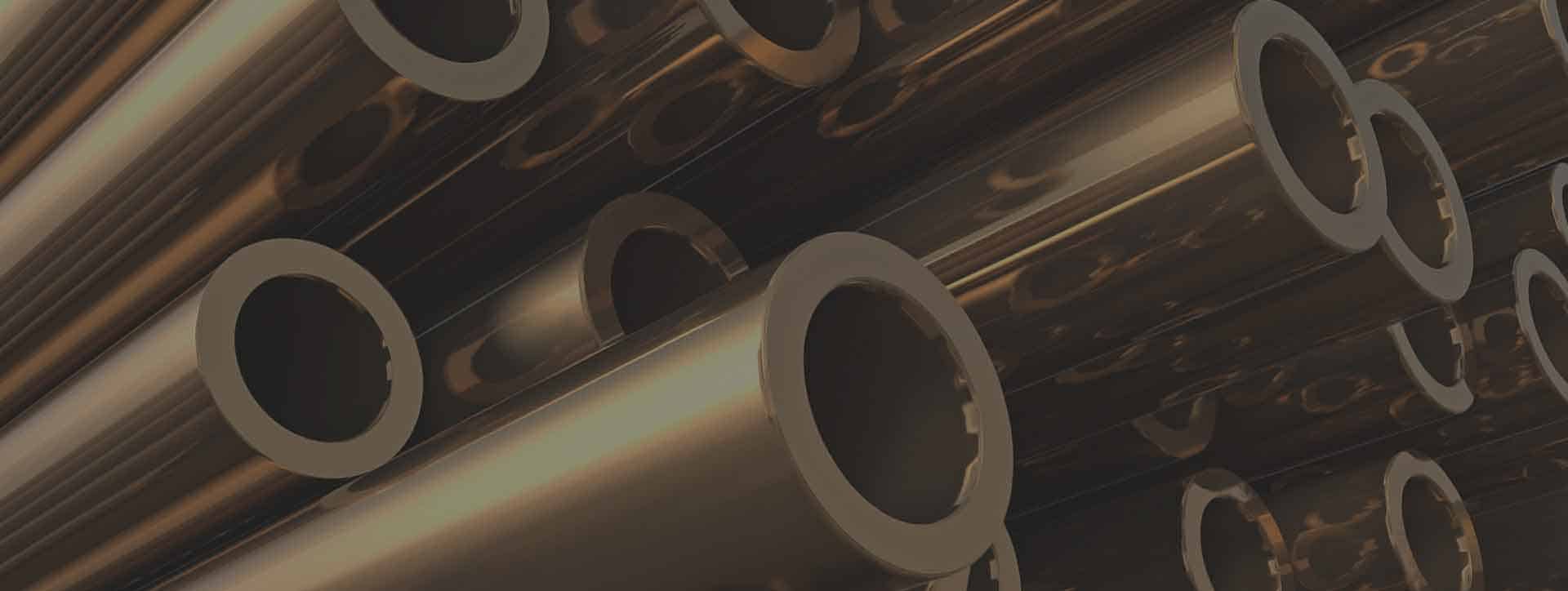
Bronze
Available formats: Bars, Tubes, Caps, Plates and Plates.
Bronze is an alloy that consists mainly of copper with the addition of other ingredients. In most cases, the added ingredient is usually tin, but arsenic, phosphorus, aluminum, manganese and silicon can also be used to produce different properties in the material.
All these ingredients produce a much harder alloy than copper alone. The bronze is characterized by its matt golden color. You can also tell the difference between bronze and brass because bronze will have weak rings on its surface.
In addition, bronze is a good general purpose alloy and is resistant to corrosion of seawater and steam at high temperatures up to 270 ° C.
Degrees and structures
B5 | Bronze Copper Alloy Tin Zinc
Copper B5 is a base alloy CuSn noted for its excellent properties of toughness, toughness, wear resistance, corrosion and elasticity. They need to have good lubrication, which allows them to work with high specific loads. Tin copper alloy also known as red bronze or leaded gunmetal.
B6 | Bronze Copper Alloy Tin Phosphorus
B6 or CuSn6 provides an excellent combination of strength, cold formability and hardness. It is wear resistant, has good corrosion resistance and welding properties. Due to its high strength and elasticity, combined with good machining properties, it is used for all types of springs and flexible metal pipes.
B7 | Bronze Copper Alloy Tin Lead
B7 is a tin lead bronze also known as red bronze or leaded gunmetal. These alloys are free cut and retain a favorable thermal conductivity and good lubrication due to the lead content. It has a good relationship between resistance and elongation. It is a semi-hard material resistant to wear, corrosion and sea water. General use.
B8 | Bronze Copper Alloy Tin Phosphorus
Bronze alloys such as phosphorous B8 such as C52100, also known as C521, consist of copper with 0.50? 11.00% of tin and 0.01? 0.35% of phosphorus. Tin increases corrosion resistance and alloy strength. Phosphorus increases the wear resistance and rigidity of the alloy. These alloys are notable for their toughness, strength, low coefficient of friction and fine grain.
B10 | Bronze Copper Alloy Tin
The B10 CuSn-based alloy stands out for its excellent hardness, toughness, wear resistance, corrosion and elasticity properties. They need to have good lubrication, which allows them to work with high specific loads. Since welding is carried out in a very short range and at a high temperature, tension during welding and cooling should be avoided.
B12 | Bronze Copper Alloy Tin
Material with good wear resistance, resistant to corrosion and salt water. The CuSn12Ni2-C materials? GS and CuSn11Pb2? GS were developed from this alloy. They are distinguished by greater stability and wear resistance, together with improved anti-friction properties. Alloy B12, with designation C90800 complies with the Federal Law on Lead Reduction in Drinking Water.
B14 | Bronze Copper Alloy Tin
The B14 alloy is a very hard, tough bronze with good sliding properties and excellent corrosion resistance. Withstands great efforts, impacts, wear, abrasion, fatigue and high temperature; resistant to high hydraulic pressures, good anti-friction quality. Relatively with good resistance to cavitation and corrosion by seawater.
BA18 | Bronze Copper Alloy Aluminum Iron
Aluminum bronzes such as BA18 provide superior hardness and corrosion resistance to other bronze alloys. It is used in applications where the importance of corrosion resistance is high and in marine water environments. Aluminum together with iron and nickel in BA18 C95500 acts as a reinforcer in these alloys.
BA20 | Bronze Copper Alloy Aluminum Nickel Iron
Bronze nickel aluminum bronzes such as BA20 provide superior hardness and corrosion resistance to other bronze alloys. It is used in applications where the importance of corrosion resistance is high and in marine water environments. BA20 aluminum bronze is the standard copper alloy with the highest strength.
BP10 | Bronze Copper Alloy Tin Lead
Tin bronzes with high lead content are free cut and retain favorable thermal conductivity and good lubrication due to lead content. Tin lead bronzes such as BP10 are ideal for bearing applications where there could be a loss of the lubrication limit.
BP15 | Bronze Copper Alloy Tin Lead
The lead content in the BP15 alloy is between 7 and 30 percent. Tin bronzes with high lead content are free cut and retain a favorable thermal conductivity and good lubrication due to lead content, they are ideal for bearing applications where there could be a loss of the lubrication limit.
BP20 | Bronze Copper Alloy Tin Lead
Alloys with a high lead content can wrap foreign matter due to its malleable nature and, in doing so, protect the wear surface of a coupling part, such as a shaft. These alloys have excellent performance in unforgiving environments where there may be foreign matter, such as dirt and other foreign materials.

